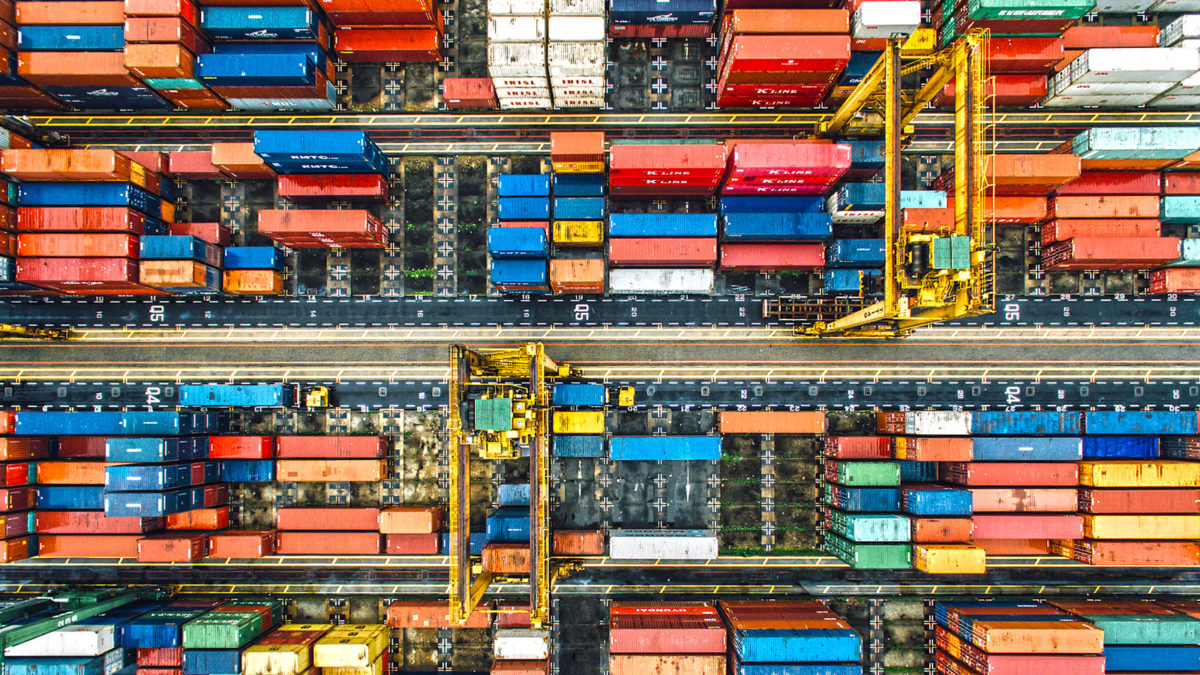$240 billion exposed to China-Australia trade impasse
Australia-China relations took another turn for the worse following China’s refusal to apologise for posting a controversial image. This grotesque illustration depicts a ‘photoshopped’ Australian soldier holding an Afghan child’s throat. The image was shared on social media by a spokesperson for the Chinese Foreign Ministry after proof was found that 39 civilians and prisoners were murdered in Afghanistan.
China seems to be referring to the Australian SAS, into the behaviour of which in Afghanistan (along with the Commandos) Australia has conducted a judicial investigation. It is the latest in a long line of intimidation tactics. This is China’s way of kneecapping Australia as punishment for a range of sins, most notably calling for an independent international inquiry into the origins of the COVID-19 outbreak. In this article, we will go through Australian exports to China and the ASX stocks that have been impacted.
It has been a year from hell for Australian exporters selling into China. It started off with the suspension of some of Australia’s abattoirs in May and then flowed on with the introduction of massive tariffs on barley, Spinning mills were told to stop buying cotton, $2 million worth of lobsters were left to die on a Chinese runway, and then trade was halted in sugar, barley, wine, timber, coal and copper.
Chinese consumer confidence in the supply of Australian products is next to zero, as China continues to sabotage bilateral relations and forces its importers to stay clear of Australian produce. Chinese importers are now spooked and will not test the Chinese Government. It is just a matter of time before the remaining exports Australia sends China are dumped at port or stamped with a 200% tariff. Is this a short-term power struggle, or a sign of the future?
In the table below we have highlighted the sectors hit by Chinese trade policy thus far and the listed stocks most exposed:
| Australia exports | Status | Export Amount $ | Australian Stocks exposed |
| Coal | Suspended | $13.93bn | CRN, NHC, SMR, TER, WHC, YAL |
| Lobsters | Suspended | $752m | AS1, CSS, HUO, MCA, OGA, SFG, TGR |
| Sugar | Tariffs dropped | $100m | SUG, MSF |
| Wine | Tariff 200% | $1.28bn | TWE, UMG, AVG, BEE, LRK, GRB, DW8, FFL |
| Barley | Tariff 80.5% | $917m | GNC, NUF |
| Timber | Suspended | $1.6bn | BRI, MWY, KPT, PPY |
| Copper (ore & concentrate) | Suspended | $1.5bn | SFR, OZL, BHP, RIO |
| Cotton | Facing a 40% tariff | $800m-$1.2bn | NAM |
| Beef – Abattoirs | Partial Suspension 4.8%-12% tariff | $2.83bn | AAC, ELD, RHL, WLD, NUF |
China is Australia’s largest and most important trading partner, with a two-way trade relationship of roughly $252 billion in 2019. Trade to China accounts for roughly 39% of Australia’s exports. Iron ore, coal (both steelmaking and thermal) and LNG dominate trade, with $150 billion worth of exports in 2019.
Wine
Late last Friday, China’s Commerce Ministry announced preliminary anti-dumping duties ranging from 107% to 212% on Australian bottled wine imports. China is the top wine export destination for Australia and accounts for 39% of total exports as at year ending Sept. 2020. All Australian exporters, small and large, will feel the brunt of China’s decision. The main exporter is Treasury Wine Estates (ASX: TWE) which has seen its shares collapse since the announcement. Known for its iconic brands Penfolds, Wolf Blass, Lindeman’s and many others, TWE said the Chinese market accounts for 30% of its earnings in the past financial year, and two-thirds of its sales to Asia. Australia exports 36.7% of its wine to China, according to IBISWorldAU. Other stocks that will be affected are United Malt Group (ASX: UMG) and Australian Vintage Wines (ASX: AVG).
Coal
Australia’s days of exporting coking (steelmaking) coal to China could be numbered. Coking coal exports ordered by Chinese steel mills were diverted away to other countries, and the mills told to stop buying Australian coking coal, joining Beijing’s restrictions on Chinese utilities buying thermal coal, which is used in electric power generation. The potential immediate economic impact is about $14 billion-$15 billion.
Longer-term, it’s around $50 billion, as the plans for ten massive Australian coal mines worth more than $45 billion are at risk, although the industry may be able to find new markets in both kinds of coal, albeit probably not replicating China’s appetite. It’s a hard pill to swallow, but the world’s largest mining company pre-empted this, reducing its exposure to coal in preparation for a decarbonised world. Rio Tinto (ASX: RIO) divested its interests in thermal coal back in 2018, while BHP (ASX: BHP) says that its thermal coal segment (which is only 3% of BHP’s total asset base) will be reduced, with proposed sale or demerger of the assets. In the case of thermal coal, alternatives to Australian supply, such as coal from Indonesia, are inferior in quality and hence will have implications for China’s carbon emission targets, which may mean this is a short-term rather than long-term issue.
Barley
China imposed tariffs of up to 80.5% on Australian barley exports, sending shivers through the Australian barley producers. In 2017-18, Australia exported $1.54 billion worth of barley to China; in 2018-2019 that figure dropped to $917 million due to drought. Australian barley exporters that will feel the brunt of this decision are ASX-listed GrainCorp (ASX: GNC), unlisted company Grain Growers, unlisted WA-based cooperative CBH and international commodities company Glencore (LON: GLEN).
Beef
Australia’s cattle and beef industries were targeted in August this year after the Chinese Government suspended exports from family-owned meat processor John Dee due to the discovery of a ‘banned’ chemical.
The move follows on from the banning of beef exports from four of Australia’s biggest abattoirs in May. Australia accounts for between 1000 to 2000 tonnes of China’s beef imports per month and trade per year is worth about $2.8 billion. However, US and Canadian beef are viable alternatives for Chinese importers. There are a few stocks that are directly affected: Australian Agricultural Co (ASX: AAC), Elders (ASX: ELD), Ruralco (ASX: RHL) and Wellard (ASX: WLD). AAC is Australia’s largest landholder, with a herd of about 350,000 head. Shares have been hit hard, as China accounts for 15% of its total meat sales.
Lobsters
Chinese seafood markets were reluctant to buy lobsters, causing 20 tonnes of lobsters, worth roughly $2 million, to be stranded on Chinese tarmac. Chinese authorities inspected most of the shipments and cited concerns about “trace elements of metals.” While some shipments were cleared, some were delayed. This has caused Australian exporters to stop sending shipments until there is clarification. The lobster market was worth about $752 million in 2019, with a list of smaller ASX listed companies with potential exposure per the above table.
Sugar
Australia exports some 170,000 tonnes of sugar a year to China, worth roughly $100 million. What was surprising is that Beijing decided not to extend the sugar import tariffs that have been in place for two years but instead to cancel them altogether. The sugar industry has been crippled by trade restrictions that have limited exports into China.
Timber
Australian timber exports were hit by Chinese customs restrictions after bark beetle was detected in Queensland logs. The insect could potentially kill local trees, so China indefinitely suspended imports of all Victorian timber logs. Trade on an annual basis for whole logs from Victoria to China is valued at $260 million. Australia exported logs worth $614 million and woodchips worth $980 million in the 2018-19 financial year, bringing the total to $1.6bn.
Copper
China has ordered its copper commodity traders to stop buying copper concentrate from Australia. Sandfire Resources (ASX: SFR), however, is confident in its ability to increase sales contract volumes to existing and new copper concentrate customers in non-Chinese markets. SFR maintained its production guidance for FY2021. Australia exports roughly 55% of its copper to China, worth about $1.5 billion.
Cotton
Chinese cotton mills were forced to stop buying from Australian cotton exporters last month. Speculation is growing that the cotton industry faces a 40% tariff that would render its trade with China unprofitable. There is only one ASX listed stock in this sector: Namoi Cotton (ASX: NAM), which exports to China.
Conclusion: It’s time to party elsewhere.
China is determined to punish Australia and show other countries the consequences for political disagreements. The answer is simple: Australia’s over-reliance and dependence on China has put us in a vulnerable position. We can no longer have all our eggs in one basket anymore. Australia must look for other countries to replace China. Prime Minister Scott Morrison appears to be on the ball, actively forging relationships with India, Vietnam, Indonesia and countries in the Pacific region. The recent high-level meeting of the “Quad” nations (Australia, USA, Japan and India) had on the agenda the co-ordination of policies in the face of a rapidly rising China. This could provide Australia with an opportunity to shift its trade reliance away from China and onto the Quad members, and other regional countries such as Indonesia, Thailand, Vietnam and South Korea.









